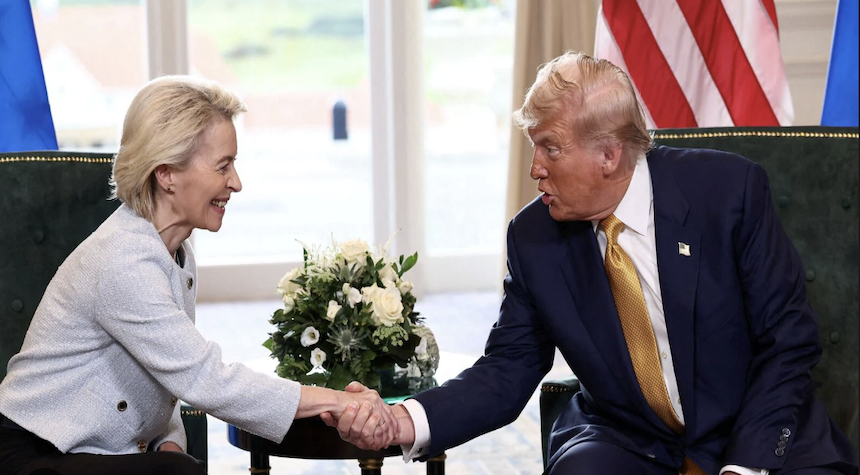The United States and the European Union announced on Thursday the finalization of a trade agreement, previously agreed upon last month, encompassing a 15% U.S. tariff on a majority of EU imports, which includes but is not limited to automobiles, pharmaceuticals, semiconductors, and lumber.
The commitments made by both parties were outlined in a three-and-a-half-page joint statement, which detailed the EU’s promise to eradicate tariffs on all U.S. industrial goods and provide preferential market access for a broad array of U.S. seafood and agricultural products. In response, it has been reported that Washington will move to decrease the current 27.5% U.S. tariff on cars and car parts, a substantial burden for European automakers, once Brussels initiates the necessary legislation to implement the promised tariff cuts on U.S. goods.
This deal was announced on July 27 by President Donald Trump and European Commission President Ursula von der Leyen, following an hour-long meeting at Trump’s luxury golf course in Turnberry, Scotland. This meeting was the culmination of months of negotiation between the two leaders, who met again this week as part of negotiations aimed at resolving Russia’s war in Ukraine. Both leaders have praised the trade agreement as a historic achievement, suggesting it could be expanded over time to cover additional areas and further improve market access.

An anonymous senior administration official suggested that European carmakers could see relief from the current U.S. tariffs within a matter of weeks. The official emphasised the mutual interest in rapid progress, contingent on the introduction of the necessary legislation by the EU. The joint statement, according to the official, serves as a mechanism to ensure mutual accountability and the fulfillment of last month’s pledges.
The joint statement indicated that the U.S. tariff relief on autos and auto parts would come into effect on the first day of the month in which the EU introduces the necessary legislation. This suggests the possibility of retroactive relief for car manufacturers. Furthermore, the agreement confirms the EU’s intention to procure $750 billion in U.S. liquefied natural gas, oil, and nuclear energy products, plus an additional $40 billion in U.S.-made artificial intelligence chips. It also reiterates plans for EU companies to invest an additional $600 billion across U.S. strategic sectors through 2028.
They committed to addressing “unjustified digital trade barriers” and agreed to negotiate rules of origin to ensure that the agreement’s benefits predominantly accrue to both trading partners. They further agreed to consider cooperation to protect their respective steel and aluminum markets from overcapacity, while ensuring secure supply chains between each other, including through tariff quotas.
Given the weight of these developments, it’s crucial to stay informed as the situation unfolds.

